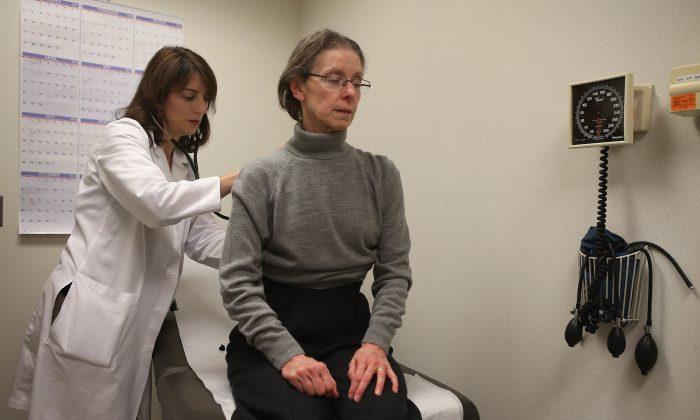America is suffering from a shortage of primary care physicians. And with the national patient population expanding and fewer doctors choosing to be generalists, the shortfall is only getting worse. By 2020, there will be a shortage of an estimated 45,000 primary care doctors.
Reforming graduate medical education—the system used to train new physicians—would help address this problem. Established in 1965, the current system is outdated and inefficient. It doesn’t meet the health care needs of our nation. Voters must urge Congress to repurpose a small portion of current funding toward new training models that fix the shortfall and meet patients’ needs.
A July report from the Institute of Medicine demonstrates that many graduate medical education programs fail to provide enrollees with the knowledge and skills needed to provide high-quality care outside of the hospital. Newly minted doctors struggle with even “simple procedures” commonly required in office-based settings.
The main cause of this problem is that the bulk of the average doctor’s residency training takes place in a large teaching hospital. That’s a unique environment with many advantages for the small percentage of people who receive care there. But it bears little resemblance to outpatient clinical settings where most care is delivered, particularly in rural and low-income areas. Patients in these regions often struggle to find adequate services.
Fortunately, some medical organizations are taking innovative steps to address these flaws.
Consider the Wisconsin Collaborative for Rural Graduate Medical Education. This “regional cooperative” connects medical school residents to local clinics. The initiative exposes residents to the realities of medical care outside the confines of a teaching hospital. Residents enjoy a much higher level of personalized patient interaction and gain a better understanding of how to provide quality, culturally competent care.
Teaching Health Centers link primary care providers to clinics and health centers in underserved communities. Their graduates are almost three times more likely to practice in underprivileged areas.
Smartly, the Affordable Care Act includes funding for expanding Teaching Health Centers throughout the country. In 2014, the federal government allocated grants to 60 centers, enabling them to train 550 additional doctors.
Another successful model for improving the organization of medical education is found in osteopathic postdoctoral training institutions. These partnerships enable medical schools, hospitals, and community-based health care facilities to pool their academic and research resources for graduate medical education.
At New York Institute of Technology College of Osteopathic Medicine, we pioneered one of the first OPTIs in 1995. Since then, our OPTI has worked with many health care providers to increase the number of residents and provide a broader educational experience in community hospitals and clinics.
Across the country, this model is working. In fact, 40 percent of these osteopathic residents are choosing the generalist disciplines of family medicine, general internal medicine, and pediatrics. At more traditional programs, just 3 in 10 physicians choose primary care.
Right now, Medicare allocates over $13 billion annually to finance graduate medical education programs. Distribution of those funds is based on an outdated formula that’s highly biased toward traditional teaching hospitals and neglectful of innovative models like regional cooperatives, training health centers, and OPTIs.
Sustained funding needs to flow to these initiatives. Modernizing the graduate medical education system will provide the flexibility necessary to address workforce and patient needs in an evolving health care system.
Dr. Barbara Ross-Lee is vice president for Health Sciences and Medical Affairs at New York Institute of Technology and a member of the Institute of Medicine’s committee on graduate medical education.
